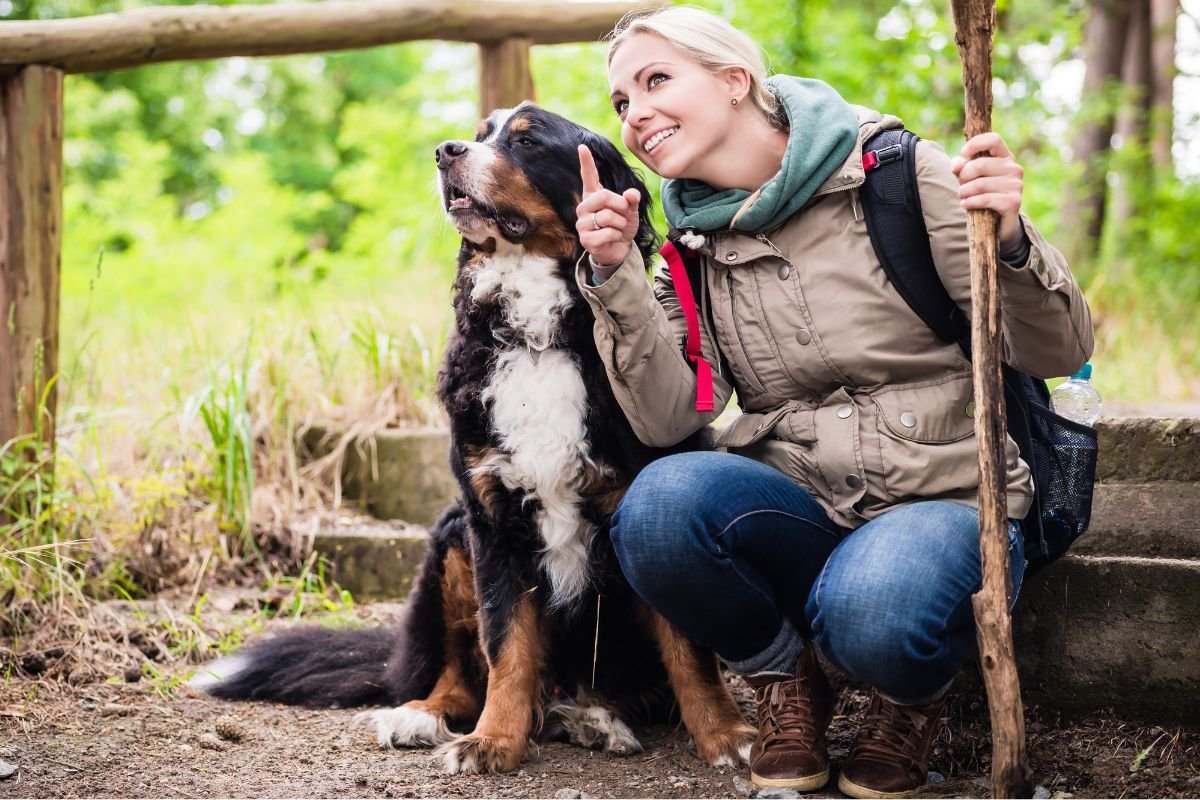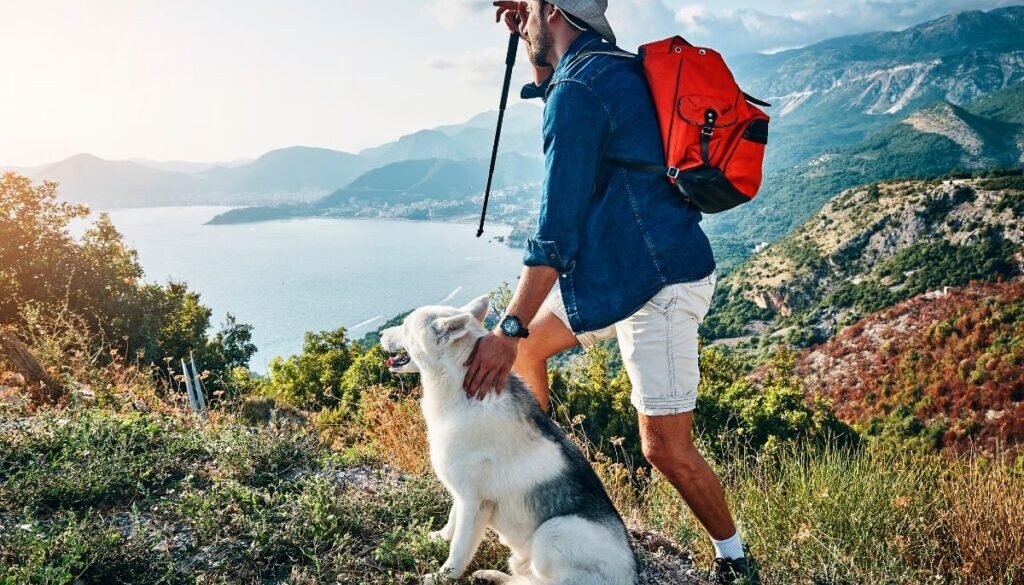Dog Hiking Tips for a Safe and Fun Experience
Why Hike with Your Dog?
Have you ever watched your dog’s tail wag like a propeller at the mere mention of an outing? Hiking with your dog is not just a great way to exercise but also strengthens the bond between you and your furry friend. The American Kennel Club (AKC) notes that regular outdoor activities can improve a dog’s physical and mental well-being, which may help address behavioral issues.
Beyond physical health, hiking gives dogs a chance to sniff, explore, and experience the world outside the confines of a yard. As the saying goes, “A tired dog is a happy dog”—and a happy dog makes for a happy owner! But let’s face it: hiking with a dog isn’t as simple as grabbing a leash and heading out. That’s where we come in, with tips to make your outdoor adventures both safe and memorable.
Preparing for the Adventure

Essential Gear for Your Pup
Before you and your furry friend hit the trail, make sure you’re both well-prepared. Here’s a list of must-haves for a safe and enjoyable hike:
The Basics
- Sturdy Leash and Harness: A no-pull harness combined with a leash no longer than six feet ensures your dog stays secure and close by.
- Collapsible Water Bowl: Lightweight and portable, these bowls make hydrating on the go a breeze. Don’t forget to pack plenty of water for both of you!
- Dog Backpack: If your pup is large and healthy enough, let them carry some of the load! Pack their water, poop bags, and snacks—but keep the weight under 10-12% of their body weight.
- Pro Tip: Start with short walks to help your dog adjust to wearing a backpack.
Safety First
- ID Tags and Microchip: Ensure ID tags are up-to-date and include your phone number. For added peace of mind, a GPS tracker is a great investment.
- Paw Protection: Whether it’s booties for rough terrain or paw balm for extreme weather, protecting your dog’s paws is a must.
- First Aid Kit: Include essentials like bandages, tweezers (for splinters or ticks), antiseptic wipes, and any necessary medications your dog might need.
Stay Visible: Reflective Gear and LED Lights
Safety doesn’t stop when the sun sets! Be prepared for early morning, late evening, or cloudy day hikes with these essentials:
- Reflective Harness and Leash: These make your dog easily visible to other hikers, bikers, and vehicles on shared trails.
- Clip-On LED Lights: Attach lightweight LED lights to your dog’s collar or harness to improve visibility in low-light conditions.
- Headlamps for You: Don’t forget to light your own way with a headlamp or flashlight to keep both of you safe.
- Pro Tip: Choose LED lights with multiple flashing modes—they’re extra eye-catching for low-visibility situations.
Fitness Levels and Training

Just like humans, dogs need to be physically prepared for hikes. Begin with shorter walks on uneven terrain and gradually increase the distance. Pay attention to their stamina and comfort level.
Signs your dog might not be ready for a long hike:
- Excessive panting or lagging behind
- Limping or paw sensitivity
- Reluctance to continue walking
Did you know? Active breeds like Border Collies and Australian Shepherds are built for adventure, but even smaller breeds like Dachshunds can thrive on trails with the right preparation and pacing.!
Finding Dog-Friendly Trails
Research and Rules
Not all trails are dog-friendly, so it’s essential to do your homework. Look for trails that explicitly welcome dogs and check if leash laws apply. Popular websites like AllTrails often list pet policies for each trail.
Questions to ask when researching:
- Are dogs allowed year-round?
- Are there designated off-leash areas?
- Are there natural hazards like cliffs or fast-moving streams?
Trail Etiquette for Dog Owners
Being a responsible hiker ensures everyone on the trail has a good experience. Follow these golden rules:
- Leave No Trace: Always pick up after your dog. Use biodegradable poop bags and carry them until you find a trash bin.
- Yield the Trail: Step aside to let other hikers pass, especially if they’re not comfortable around dogs.
- Keep Dogs Leashed: Even if the trail permits off-leash walking, ensure your dog is under voice control.
- Prevent Barking: Keep your dog calm by ensuring they’re exercised and comfortable before hitting the trail. Reward quiet behavior and redirect barking with a favorite toy or treat.
Safety First: Keeping Your Dog Healthy
Hydration and Nutrition

Dogs can overheat quickly, especially in hot weather. Bring plenty of water for both of you and take breaks often. A good rule of thumb is to offer water every 15-30 minutes, depending on the difficulty of the hike.
Signs of dehydration in dogs:
- Dry nose and gums
- Excessive panting
- Lethargy or confusion
Pack high-energy treats like jerky or kibble to keep their energy up. Avoid feeding large meals right before the hike to prevent bloat, a potentially life-threatening condition.
Dealing with Wildlife and Hazards
Dogs are naturally curious, which can sometimes lead to trouble. Be on the lookout for:
- Wildlife Encounters: Keep your dog close to avoid startling animals like deer, snakes, or even bears.
- Poisonous Plants: Common culprits include poison ivy, mushrooms, and wildflowers.
- Ticks and Fleas: Use a preventative treatment and check your dog thoroughly after every hike.
Did You Know? Rattlesnake vaccines can help reduce the severity of symptoms, but immediate veterinary care is still essential after a bite.
Seasonal Challenges: Hiking in Different Weather Conditions
Winter Hiking Tips

When the trails are covered in frost or snow, keeping your pup warm and safe is essential. Here’s how to prepare:
- Layer Up: Invest in an insulated dog jacket for breeds with short coats or low cold tolerance.
- Paw Protection: Use waterproof booties or apply paw balm to prevent cracked paw pads from ice or salt exposure.
- Shorter Hikes: Keep hikes shorter to prevent hypothermia, and watch for signs like shivering or lethargy.
- Stay Visible: Winter days are shorter, so consider reflective gear or LED lights (more on this below) for added safety.
Hot Weather Precautions

Hiking in hot weather can pose risks like heatstroke, especially for breeds with thick coats or flat faces. Keep your pup cool with these tips:
- Avoid the Heat: Plan hikes early in the morning or later in the evening when temperatures are cooler.
- Shade Stops: Take frequent breaks in shaded areas, and avoid walking on hot surfaces like asphalt or sand that can burn paws.
- Hydrate, Hydrate, Hydrate: Offer water every 10-20 minutes, and carry extra for longer hikes. Look out for signs of overheating, such as excessive panting, drooling, or weakness.
Making the Hike Enjoyable for Everyone
A great hike is one where both you and your dog come back happy and tired. Here are some tips to keep the experience fun:
- Pace Yourself: Match the pace to your dog’s comfort level.
- Take Breaks: Find shady spots to rest, especially on warm days.
- Bring Toys: A lightweight ball or chew toy can provide entertainment during rest stops.
- Capture Memories: Snap photos of your dog exploring to commemorate your adventures.
After the Hike: Post-Adventure Care
The adventure doesn’t end when you reach the car. Proper post-hike care ensures your dog stays healthy and ready for the next outing.
- Inspect Paws: Look for cuts, thorns, or irritation.
- Check for Ticks: Use a fine-toothed comb and remove any ticks promptly.
- Rehydrate and Rest: Offer water and let your dog rest in a cool, comfortable spot.
- Clean Up: Wipe down their coat to remove dirt, allergens, or irritants.
Bonus Tip: Keep a “hiking checklist” handy so you don’t forget anything for your next adventure.
FAQs
- Can all dogs go hiking?
While most dogs can enjoy hiking, some breeds with flat faces (like Bulldogs) or health issues may struggle. Always consult your vet before starting a new activity. - How far can my dog hike in a day?
This depends on your dog’s breed, age, and fitness level. Start with shorter hikes and work up to longer distances. - What should I do if my dog gets injured on the trail?
Carry a first aid kit and know basic dog first aid. If the injury is severe, carry your dog to safety and seek veterinary care immediately. - Are there apps for finding dog-friendly trails?
Yes! Apps like AllTrails and BringFido are excellent for locating trails where dogs are welcome. - Do I need special training to hike with my dog?
Basic obedience training is crucial for safety and enjoyment. Commands like “come,” “leave it,” and “sit” can make a world of difference.
Hiking with your dog is a fantastic way to explore the great outdoors while keeping both you and your furry friend happy and healthy. So grab your gear, leash up, and hit the trails—adventure awaits!



